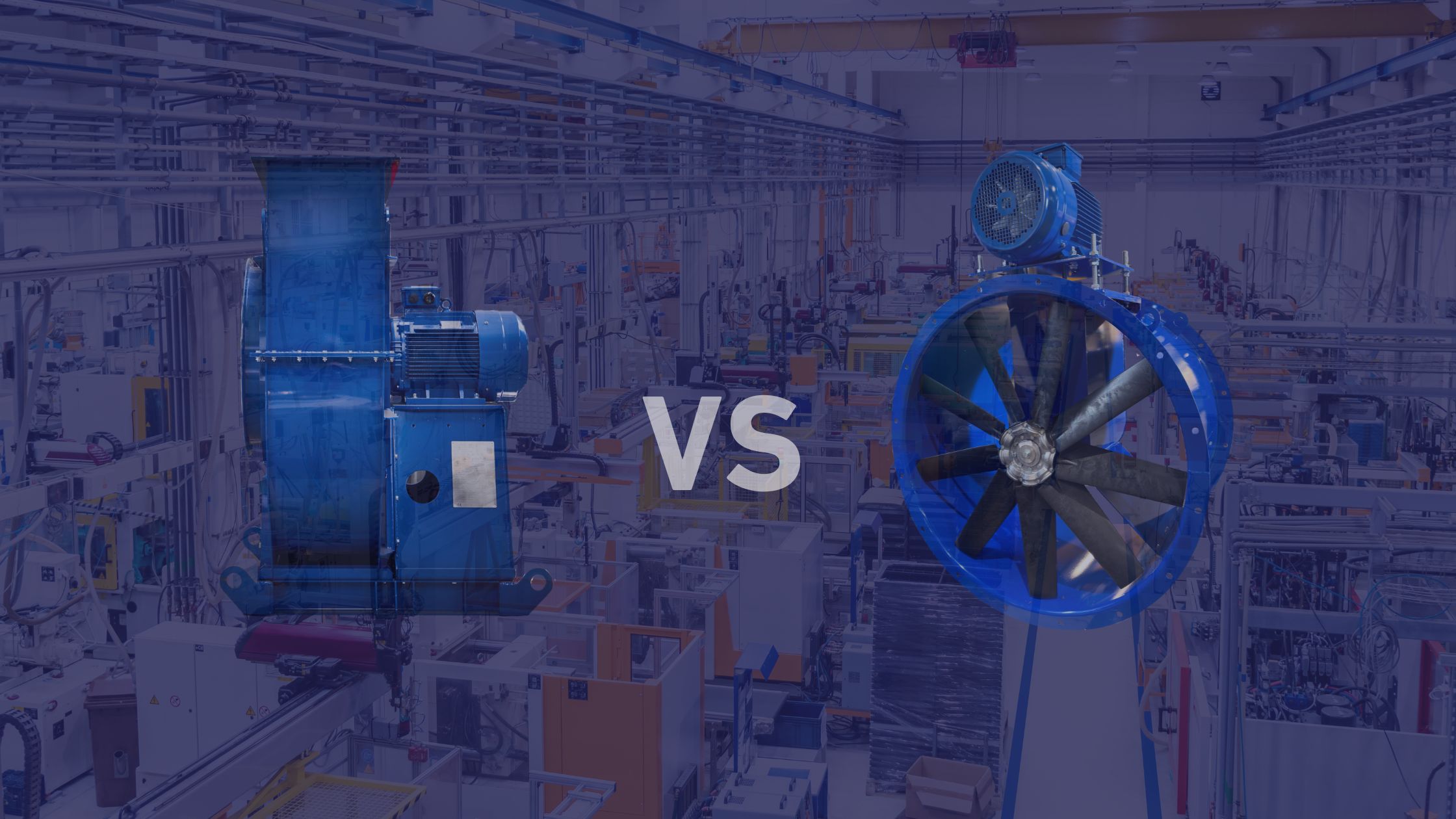
Which Fan Does Your Business Need? Axial vs Centrifugal Fans
Published on 21 Jan 2025
Finding The Best Fit
Axial and centrifugal fans are two of the most commonly employed types of industrial fans. Both types of fans are designed to move air efficiently, yet they operate differently and are suited to distinct applications. Understanding the differences between these fans can help businesses choose the right option for their system.
Regardless of the type of business a facility operates in, industrial fans serve a variety of equally significant functions. These fans are necessary to maintain a safe, secure, comfortable, and productive working environment for each system, whether it is in food processing, electrical power, chemical, engineering, cement production, heating and ventilation, or many other industries.
Industrial fans must be dependable, high-quality, and robust pieces of equipment made and installed by respectable businesses like RHF Fans. They also must ensure that the standards of goods produced are met at the highest possible level. For this reason, choosing the appropriate industrial fan types for systems from the outset is essential. We’re here to break down and simplify the differences between axial and centrifugal fans, comparing their design, functionality, and applications to help you find the best fit for your business.

What are Axial Fans?
With an axial fan, the air is drawn in and forced out in a path parallel to the motor-driven rotating shaft (axis) with a propellor-like design. High air volumes can be moved effectively and efficiently by axial fans to ventilate spaces or cool objects. Depending on the size, they don't need a lot of electricity to run and come in nearly every size, from board level to room size.
Characteristics of Axial Fans
Axial fans feature a propeller-like design with blades that spin around a central shaft, excelling in high-volume, low-pressure air movement scenarios with impressive energy efficiency even at high operating speeds and offering size flexibility that ranges from small cooling fans for electronics to large industrial fans for HVAC systems.
Applications of Axial Fans
- Cooling systems for electronic devices
- Ventilation in factories and warehouses
- Exhaust systems for bathrooms and kitchens
- Cooling towers in power plants
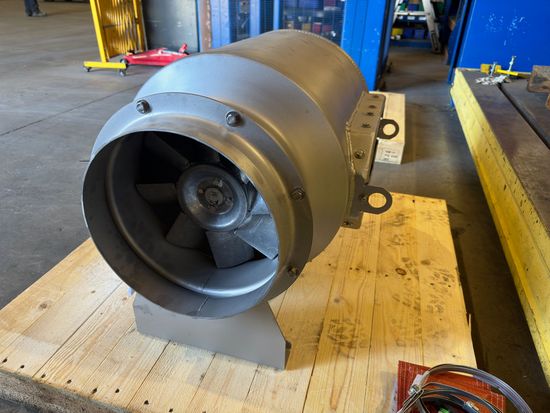
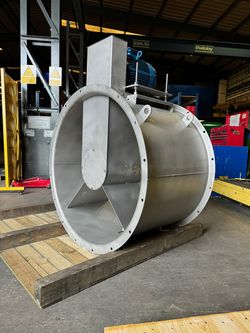

What are Centrifugal Fans?
Centrifugal fans move air at a right angle to the fan’s intake, using centrifugal force to generate airflow. The air is drawn into the fan and expelled outward through a housing, making them ideal for high-pressure applications. Air is expelled by centrifugal fans at a 90-degree angle to the direction of intake. Rotating impellers create centrifugal force, which displaces air radially and facilitates air circulation. This design makes it easier to create a greater pressure airflow, which has a significant impact on how filtration, drying, and HVAC systems work.
Characteristics of Centrifugal Fans
A rotating circular impeller equipped with a series of angled blades sits at the heart of a centrifugal fan. These blades draw air into the fan's centre while simultaneously pushing it away from the central axis. This movement generates a circular airflow as air is pulled into the fan's core, where the blades apply force to propel it outward. Known for their quieter operation than axial fans under similar conditions, these fans boast durability and are ideally suited for heavy-duty industrial applications.
Applications of Centrifugal Fans
- HVAC systems requiring ductwork
- Industrial dust collection systems
- Boilers and furnaces
- Material handling in factories
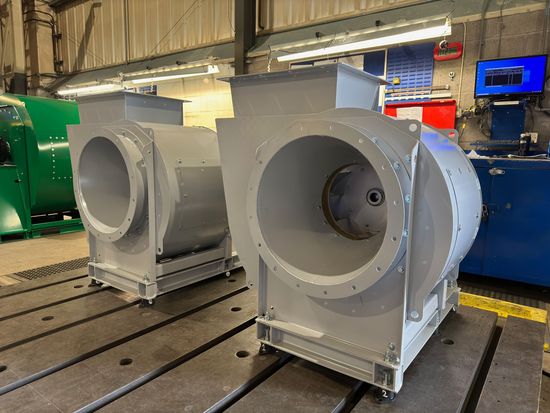
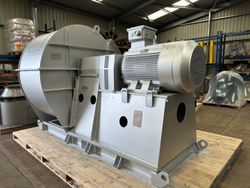
A Quick Comparison of Axial vs Centrifugal Fans
If you are stuck between the pros and cons of axial and centrifugal fans, break it down with the following considerations.
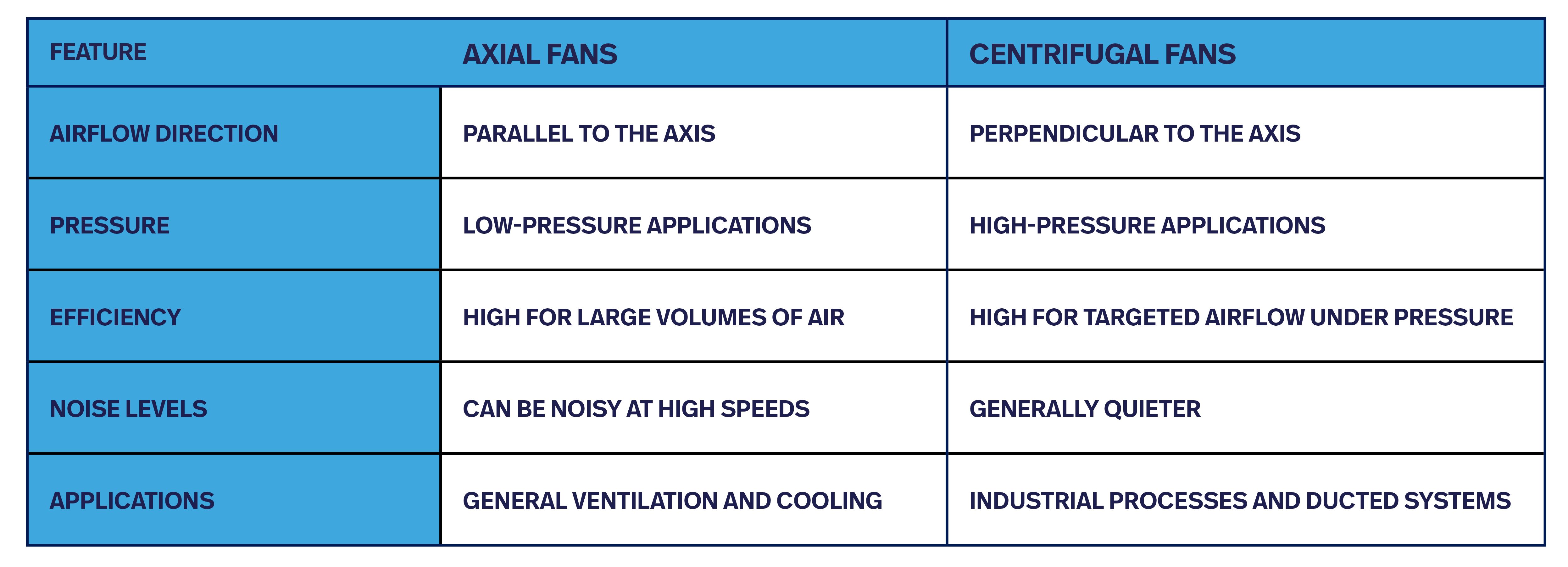
We need to consider how air passes through blades to grasp the primary distinctions between centrifugal and axial fans. Axial fans collect air and direct it parallel to the shaft using a skewed blade configuration. Centrifugal fans, on the other hand, release air at a 90-degree angle, which is advantageous when moving air against additional resistance.
As noted above, noise levels are another important distinction. Depending on the size and application, axial fans are often noisier than centrifugal fans. Additionally, axial fans are typically lighter, simpler, and smaller than centrifugal fans, which have a more complicated and heavy structure when it comes to the installation process.
Choosing the Right Fan for Your Industry
Selecting the best industrial fan for your application is a considerable challenge, mainly as fan engineering is a rare area of expertise. Given that there are multiple kinds of centrifugal fans and axial fans, choosing the right type can present additional hurdles.
If you choose the incorrect kind or model of centrifugal fan, you run the danger of sacrificing airflow and pressure and/or squandering very costly energy. So, seeking professional assistance always pays off, and that’s where RHF Fans come into play.
Innovators in Industrial Fan Technology
Our innovative team at RHF Fans have integrated advanced materials, energy-efficient motors, and noise-reduction technologies into our axial and centrifugal fans. Over the years, we've accumulated a library of over 20,000 fan designs ranging in size from 250mm to 2500mm and power capabilities from 0.37 kW to 750 kW. This range of fan systems guarantees that we can design a custom fan solution to support the demands of your business. Take a look at our axial fan and centrifugal fan product pages to see our great work for yourself.
RHF Fans Specialise in Axial and Centrifugal Fans
Let’s review what we have learned. Axial fans are generally the go-to solution for high-volume, low-pressure applications, while centrifugal fans excel in scenarios requiring higher pressure and quieter operation. If you’re looking for reliable fan solutions, consult with our experts to assess your system and facility requirements and identify the best industrial fan for your application.
